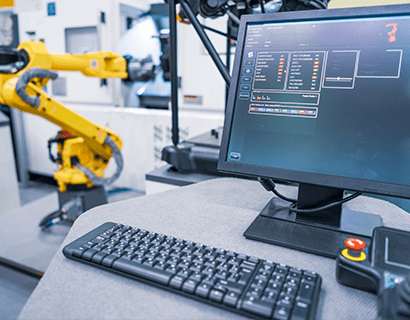Phased Array
A pioneering methodology
In the realm of non-destructive testing (NDT), Phased Array Ultrasonic Testing (PAUT) stands as a pioneering method that combines precision, versatility, and advanced ultrasonic technology. This technique has redefined the assessment of materials, welds, and structures, offering exceptional accuracy and adaptability. With its diverse applications across industries such as aerospace, manufacturing, oil and gas, and more, PAUT plays a pivotal role in ensuring the integrity and reliability of critical components
What is Phased Array?
Phased Array Ultrasonic Testing (PAUT) is a non-destructive testing method that employs an array of ultrasonic transducers to generate and receive ultrasonic waves. By manipulating the timing and amplitude of these waves, PAUT creates highly detailed images and data that reveal the internal structure of materials and welds. This advanced technique is particularly suited for inspecting complex geometries, welds, and components, offering unparalleled flexibility and precision.
Applications across Industries.
Want a chat?
Take me back
The Phased Array Inspection Procedure
Probe Configuration: A specialised array of ultrasonic transducers is selected and configured to emit ultrasonic waves into the material. The precise timing and amplitude of each transducer are controlled to steer the ultrasonic beam.
Wave Emission: Ultrasonic waves are emitted into the material from the phased array probe. The controlled timing and amplitude of the waves allow for beam steering and focusing at specific depths and angles within the material.
Data Acquisition: The reflected ultrasonic waves, after interacting with the material’s internal structure, are received by the same array of transducers. Data is collected in real-time, providing information about the material’s condition.

Image Reconstruction: Specialised software is used to reconstruct images and data representations of the material’s internal structure. These images display the size, location, and orientation of any defects.
Assessment: The findings are assessed to determine the nature and severity of defects, ensuring compliance with industry standards and specifications.
Reporting: Inspection findings, along with images, data records, or graphical representations, are documented in a comprehensive report. This report serves as a record for quality control, maintenance planning, and regulatory compliance.

Advantages of Phased Array Inspection
High Precision: It provides exceptional precision in controlling the ultrasonic beam, allowing for accurate detection and sizing of defects.
Adaptability: PAUT is highly adaptable to various materials, geometries, and inspection scenarios, making it suitable for a wide range of applications.
Real-Time Data: PAUT offers real-time data acquisition and imaging, enabling immediate analysis and decision-making.
Multi-Element Arrays: Phased array probes consist of multiple elements, providing greater flexibility in beam steering and focusing.
Non-Destructive: It is a non-destructive testing method, preserving the integrity of the inspected materials.

